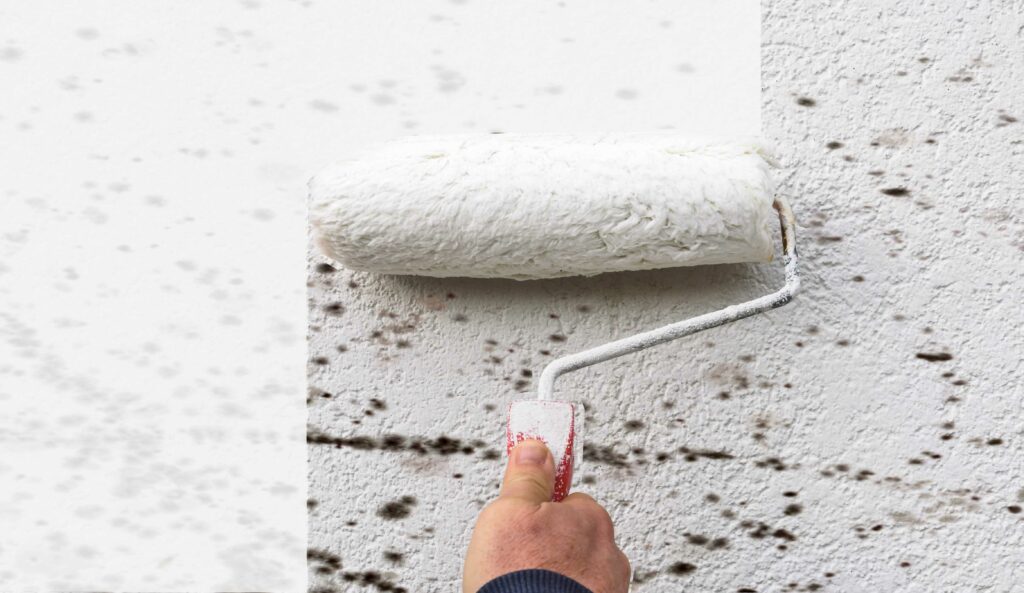Don’t Paint Over Mold in Your House in Springfield Missouri
Mold can appear almost anywhere in your house where there is moisture. It’s not just unsightly. It can also pose serious health risks.
In an attempt to save money, you might consider just painting over the mold in your house rather than addressing the underlying problem. But this isn’t a good plan.
Let’s take a closer look at all the reasons why it’s not a good idea to paint over mold in your house in house in Springfield Missouri and why addressing the root issue of the mold growth is essential.
Mold Growth Continues
Painting over mold might temporarily cover up the problem, but it does nothing to address the root cause. Mold spores are incredibly resilient and can continue to grow beneath the paint layer.
The mold in your house thrives in damp environments, and when you trap it beneath a layer of paint, you create an ideal breeding ground. Rather than solving the issue, you’re actually allowing it to worsen over time.
Health Hazards
Mold is not just an aesthetic problem. It’s a serious health hazard. Mold spores release mycotoxins into the air, which can lead to a range of health issues, particularly for those with allergies, asthma, or compromised immune systems.
Painting over mold won’t eliminate these health risks, as the spores can still become airborne or seep through the paint, causing respiratory problems and other health concerns.
Weakening Structural Integrity
Mold doesn’t only affect the surface it grows on. It can penetrate deep into building materials like drywall, wood, and insulation. Over time, this can weaken the structural integrity of your home, leading to costly repairs and potential safety hazards.
Ignoring the issue by painting over it may allow the mold in your house to further degrade these materials, leading to more extensive and expensive renovations down the line.
False Sense of Security
Painting over mold in your house provides a false sense of security. Homeowners may believe they’ve solved the problem, only to discover that the mold reappears later, often in a more severe form. By then, the issue may have become more challenging and expensive to address. It’s better to tackle mold growth head-on rather than delaying the inevitable.
Reduced Home Value
When you attempt to sell your home, a mold problem that has been painted over can come back to haunt you. Mold inspections are a standard part of the home buying process, and discovering hidden mold issues can significantly reduce the value of your property. Potential buyers will be wary of homes with a history of mold problems, leading to difficulties in selling your property.
Legal and Insurance Issues
Some insurance policies may not cover damage caused by mold in your house if it’s evident that you neglected the issue by painting over it. Additionally, if you fail to disclose the presence of mold to potential buyers or tenants, you could face legal consequences down the line. It’s always best to address mold problems openly and honestly.
Painting over mold in your house might seem like a quick and inexpensive solution, but it’s a temporary fix that only masks the problem. Mold continues to grow beneath the surface, posing health risks, weakening your home’s structure, and potentially reducing its value.
To protect your health, your home, and your family, it’s essential to address mold issues properly by identifying and eliminating the source of moisture and removing the mold entirely.
In the long run, a proactive approach to mold remediation is not only safer but also more cost-effective. There’s no better way to be proactive then having Dog Gone Mold identify and help you address any mold concerns you may have.
